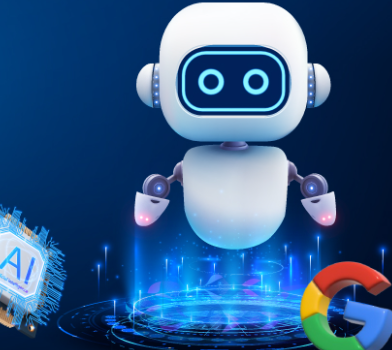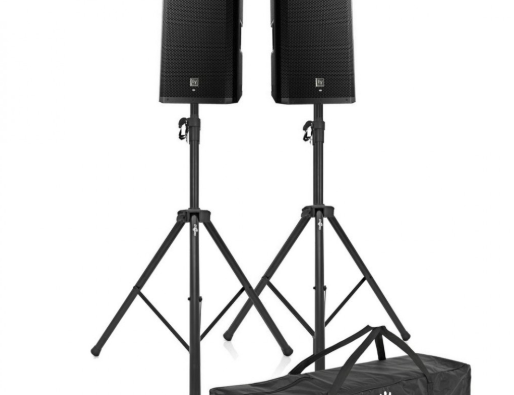
Staying ahead of competition in today’s digital world can be a challenge, especially as consumer behavior, market conditions, and competition are constantly shifting. That’s where real-time ad campaign adjustments, powered by AI, come in. By leveraging these tools, businesses can optimize their Google Ads campaigns in real time, ensuring ads are always shown to the right people at the right time, maximizing efficiency, and improving results without overspending.
Why Real-Time Ad Campaign Adjustments Matter for Google Ads
In a dynamic advertising environment, reacting swiftly to changes can make or break the success of your campaign. Real-time adjustments allow businesses to optimize their ads based on shifts in consumer behavior, competitor activities, and market trends. By tracking campaign performance as it happens, AI can pinpoint areas for improvement and make data-driven decisions, such as optimizing ad spend or refining messaging to boost conversion rates.
These adjustments help businesses stay ahead of the curve by continuously fine-tuning their ad campaigns, making sure they’re reaching their target audience with the most relevant content.
1. Adapting to Changing Market Conditions
One of the biggest advantages of real-time ad adjustments is the ability to swiftly adapt to changes in the market. For example, if you’re running a landscaping business and sudden rainfall spikes the demand for lawn care services, you can adjust your ad strategy instantly. You might increase the budget for ads promoting lawn mowing, target the specific areas affected by rain, and tweak your messaging to highlight your availability and ability to work in wet conditions. This kind of immediate adaptation ensures that your ads are always aligned with current demand, which leads to better customer engagement and more conversions.
In addition, real-time adjustments allow you to pause underperforming ads and reallocate funds to those performing better. This proactive approach ensures that your advertising budget is being used efficiently and effectively.
2. Instant Feedback on Campaign Performance
With AI-powered tools, you gain immediate insights into how your ads are performing. This means you can quickly identify what’s working and what isn’t. The data gathered helps refine your ads, ensuring they remain relevant and appealing to your target audience. Real-time ad adjustments give you the flexibility to adjust your campaign on the fly based on the latest data, optimizing your efforts to achieve the best possible results.
3. Managing Time-Sensitive Promotions
Running promotions, especially time-sensitive ones, requires agility. Real-time ad adjustments are invaluable in this regard. Let’s say you own a hardware store and decide to run a spring promotion on gardening tools. By continuously monitoring the performance of your campaign, you can see which products are performing well and adjust your ad spend accordingly. If a specific tool is generating more interest than others, you can redirect resources to further promote that product, maximizing your return on investment (ROI).
AI-Powered Real-Time Ad Campaign Adjustments
- Automated Bidding Strategies
AI has revolutionized bidding strategies with tools like Google’s Smart Bidding. This machine learning-powered system automatically adjusts your bids based on various factors, such as device, location, time of day, and user behavior. The results speak for themselves—advertisers using Smart Bidding have seen an average increase of 20% in conversion value per dollar spent compared to manual bidding. Automated bidding ensures that you get the best return for your investment, as it adjusts bids in real time to the most optimal levels.
For instance, if you run a construction supply business, you can use automated bidding to increase bids during peak construction seasons or when users are browsing on mobile devices from job sites, ensuring your ads appear at the most lucrative moments.
- Dynamic Ad Optimization
AI allows you to adjust various elements of your ad campaigns in real time. This could mean tweaking your ad copy, changing images, or refining targeting parameters based on the performance of your ads. This ensures that your ads remain fresh and relevant to your audience, driving higher engagement and conversions.
AI tracks user interactions with your ads, learning their preferences and behaviors. It then adjusts the campaign to show the most relevant content to each user, improving the overall effectiveness of your campaigns.
- Audience Targeting and Segmentation
AI also helps with audience targeting by analyzing user behavior and preferences. Google’s machine learning tools, such as in-market and affinity audiences, allow you to reach the right people at the right time. Personalized ads that speak to the user’s interests are far more likely to engage them, improving your overall campaign performance.
Furthermore, AI can segment your audience based on shared characteristics, ensuring that your ads are tailored to specific groups. It also considers external factors like weather, news events, or social trends. For example, if there’s a tax incentive for homeowners installing solar panels, AI can help you target those specific customers, increasing your chances of engaging them at the perfect time.
- Predictive Analytics
AI doesn’t just react to performance data; it can predict potential issues before they arise. Predictive analytics helps identify when performance dips or when costs spike, allowing you to take immediate action. This proactive approach minimizes the risk of poor campaign performance and ensures that you can maintain or improve your ROI over time.
By analyzing historical data, AI can also spot opportunities for optimization, highlighting areas where improvements could be made to further enhance performance.
- Automated Rules and Alerts
Automated rules and alerts allow you to stay on top of campaign performance without having to monitor everything manually. For instance, you can set up a rule to increase bids when a keyword’s cost-per-click (CPC) falls below a certain threshold. Alerts will notify you when there’s a significant change in your campaign performance, such as an unexpected spike in conversion rates, giving you the opportunity to quickly capitalize on the shift.
Conclusion
The role of AI in real-time ad campaign adjustments has become indispensable for modern businesses looking to stay competitive in the fast-paced world of digital advertising. Whether it’s through automated bidding, dynamic ad optimization, or real-time feedback, AI allows businesses to respond quickly to market changes, ensure their ads are always relevant, and improve their ROI. As AI continues to advance, leveraging its power for real-time campaign adjustments will remain a key strategy for optimizing Google Ads campaigns and achieving long-term success.












